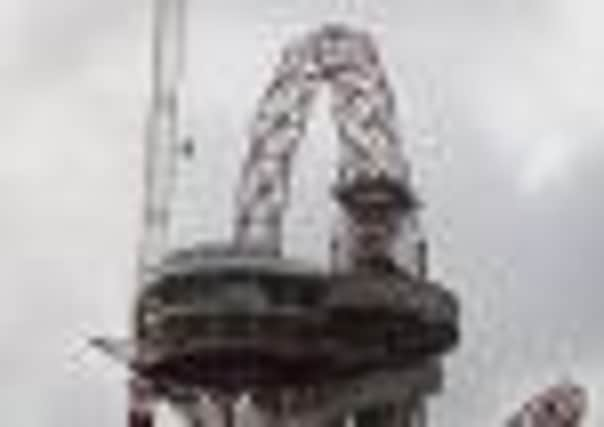Taxpayers could face hefty bill for Olympic overspend


The National Audit Office (NAO) said a doubling in the estimated security costs meant the budget was now so finely balanced there was a “real risk” that additional taxpayer funding would be needed.
Ministers insist more than £500 million remains in unallocated funds for dealing with contingencies. However, the report is likely to alarm the Treasury at a time when public spending is being pared to the bone, as the government grapples with the deficit and flagging economic growth.
Advertisement
Hide AdAdvertisement
Hide AdThe NAO also highlighted delays in finalising the transport plan for the Olympics and warned that, without effective operational planning, there could be “abiding damage” to the reputation of the Games.
Overall, the NAO said the Olympic Delivery Authority (ODA) remained on course to complete its work on the Olympic Park on time and on budget.
However, on current projections, almost all the £9.298bn public sector funding package is likely to be required, with little margin for further unforeseen costs in the final eight months.
In the past 12 months alone, the estimated cost to the taxpayer of providing security at the venues has risen by £271m to £553m following a review of the number of guards needed.
The London Organising Committee (Locog) had originally let the tender to G4S on the basis that about 10,000 would be required. However, following detailed planning earlier this year, the figure was revised to 23,700.
The NAO said the need to find so many additional guards represented a “significant recruitment challenge” and the Home Office was now in discussion with the Ministry of Defence about using military personnel.
Sports minister Hugh Robertson, who yesterday announced a further £41m in public funding for the opening and closing ceremonies, insisted the budget remained under control. “Consistent careful management of the finances has enabled us to fund additional costs such as venue security from within the public sector funding package, as well as to invest in projects that will help drive economic growth from the Games,” he said.
However, the head of the NAO, Amyas Morse, openly questioned the government assurances on the Olympic financing, warning it had little room left for manoeuvre.
Advertisement
Hide AdAdvertisement
Hide Ad“Not everything is rosy,” he said. “The government is confident that there is money available to meet known risks, but, in my view, the likelihood that the Games can still be funded within the existing £9.3bn public sector funding package is so finely balanced that there is a real risk more money will be needed.”
The NAO also raised concern that the ODA’s transport plan for the Games was behind schedule.
It pointed out that the 109 miles of London roads being used for the Olympic Route Network – including 35 miles of special lanes primarily for the use of athletes and officials – had still not been integrated with local transport plans.
Until the arrangements have been finalised, Locog and Transport for London will not be able to inform the public and businesses of the likely impact of the Games on the road network.
At the same time, the NAO said issues related to cutting journeys on buses and the Tube by non-Games users by an average of 13 per cent a day – rising to 30 per cent on peak days – had still to be resolved.
“The experience of spectators, visitors and Londoners in general would be diminished and the reputation of the Games put at risk if these issues were not sorted out,” Mr Morse said.
While ministers argued that they had more than £500m available in contingency funding, the NAO suggested the margin was much tighter.
Although there was still £354m in the public sector funding package, the NAO said the government’s own estimate put the most likely cost of meeting the “assessed risks” to the project at £318m – leaving just £36m in “headroom”.